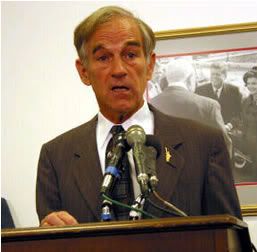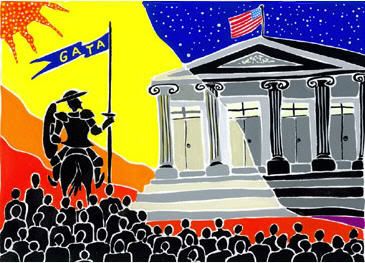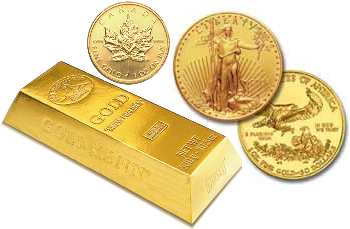
The complete article should be read by all concerned, thinking americans and holders of the US Dollar everywhere.
Full Article can be found Here:
http://www.freemarketnews.com/Analysis/110/5067/2006-05-26.asp?wid=110&nid=5067
Excerpts:
The financial press, and even the network news shows, have begun reporting the price of gold regularly. For twenty years, between 1980 and 2000, the price of gold was rarely mentioned. There was little interest, and the price was either falling or remaining steady.
Since 2001 however, interest in gold has soared along with its price. With the price now over $600 an ounce, a lot more people are becoming interested in gold as an investment and an economic indicator. Much can be learned by understanding what the rising dollar price of gold means...
Holding gold is protection or insurance against government’s proclivity to debase its currency. The purchasing power of gold goes up not because it’s a so-called good investment; it goes up in value only because the paper currency goes down in value. In our current situation, that means the dollar.
One of the characteristics of commodity money-- one that originated naturally in the marketplace-- is that it must serve as a store of value. Gold and silver meet that test-- paper does not. Because of this profound difference, the incentive and wisdom of holding emergency funds in the form of gold becomes attractive when the official currency is being devalued. It’s more attractive than trying to save wealth in the form of a fiat currency, even when earning some nominal interest. The lack of earned interest on gold is not a problem once people realize the purchasing power of their currency is declining faster than the interest rates they might earn. The purchasing power of gold can rise even faster than increases in the cost of living...

Many central bankers in the last 15 years became so confident they had achieved this milestone that they sold off large hoards of their gold reserves. At other times they tried to prove that paper works better than gold by artificially propping up the dollar by suppressing market gold prices. This recent deception failed just as it did in the 1960s, when our government tried to hold gold artificially low at $35 an ounce. But since they could not truly repeal the economic laws regarding money, just as many central bankers sold, others bought. It’s fascinating that the European central banks sold gold while Asian central banks bought it over the last several years...
...The special nature of the dollar as the reserve currency of the world has allowed this game to last longer than it would have otherwise. But the fact that gold has gone from $252 per ounce to over $600 means there is concern about the future of the dollar. The higher the price for gold, the greater the concern for the dollar. Instead of dwelling on the dollar price of gold, we should be talking about the depreciation of the dollar. In 1934 a dollar was worth 1/20th of an ounce of gold; $20 bought an ounce of gold. Today a dollar is worth 1/600th of an ounce of gold, meaning it takes $600 to buy one ounce of gold.The number of dollars created by the Federal Reserve, and through the fractional reserve banking system, is crucial in determining how the market assesses the relationship of the dollar and gold. Though there’s a strong correlation, it’s not instantaneous or perfectly predictable. There are many variables to consider, but in the long term the dollar price of gold represents past inflation of the money supply. Equally important, it represents the anticipation of how much new money will be created in the future. This introduces the factor of trust and confidence in our monetary authorities and our politicians. And these days the American people are casting a vote of “no confidence” in this regard, and for good reasons.
The incentive for central bankers to create new money out of thin air is twofold. One is to practice central economic planning through the manipulation of interest rates. The second is to monetize the escalating federal debt politicians create and thrive on.
Today no one in Washington believes for a minute that runaway deficits are going to be curtailed. In March alone, the federal government created an historic $85 billion deficit. The current supplemental bill going through Congress has grown from $92 billion to over $106 billion, and everyone knows it will not draw President Bush’s first veto. Most knowledgeable people therefore assume that inflation of the money supply is not only going to continue, but accelerate. This anticipation, plus the fact that many new dollars have been created over the past 15 years that have not yet been fully discounted, guarantees the further depreciation of the dollar in terms of gold.


